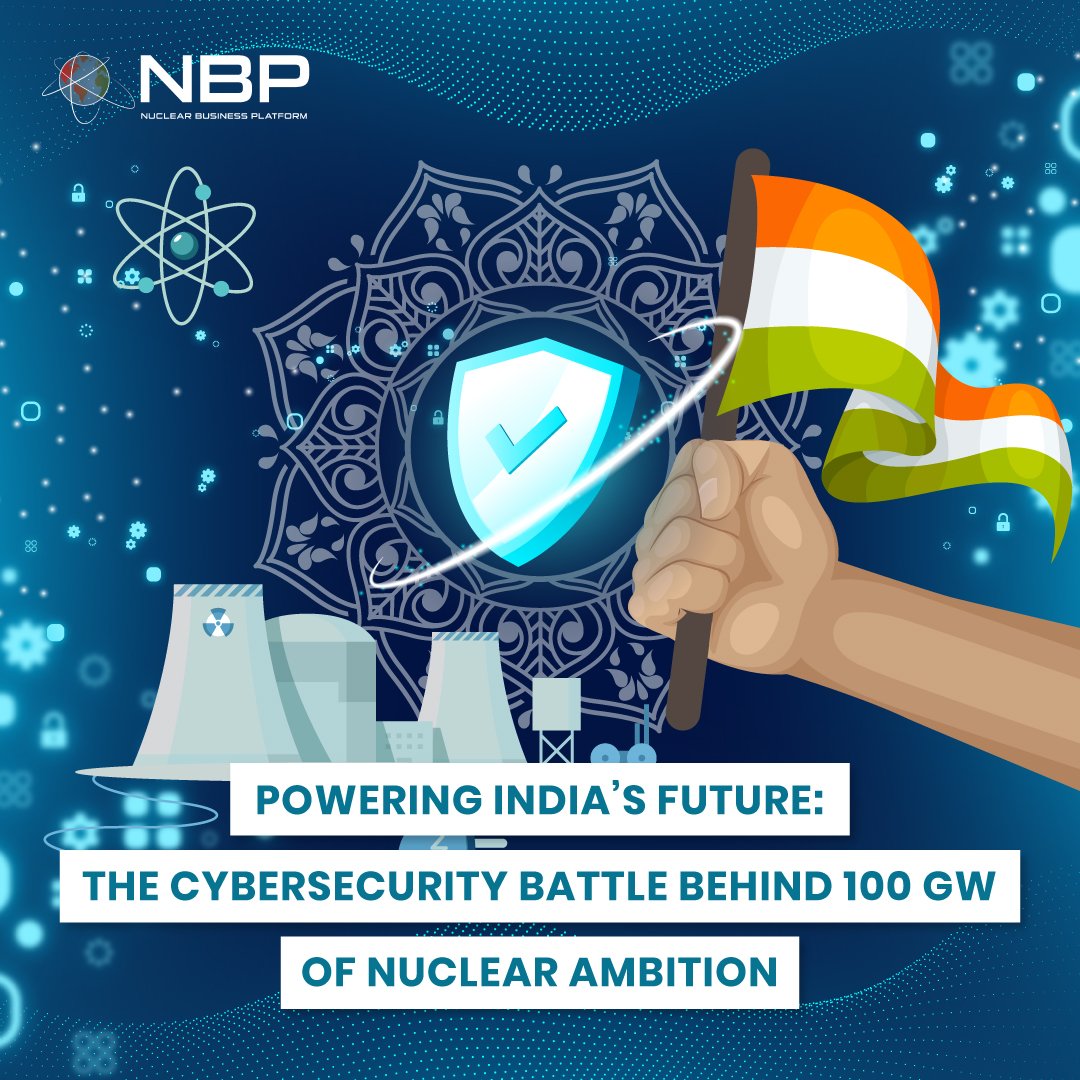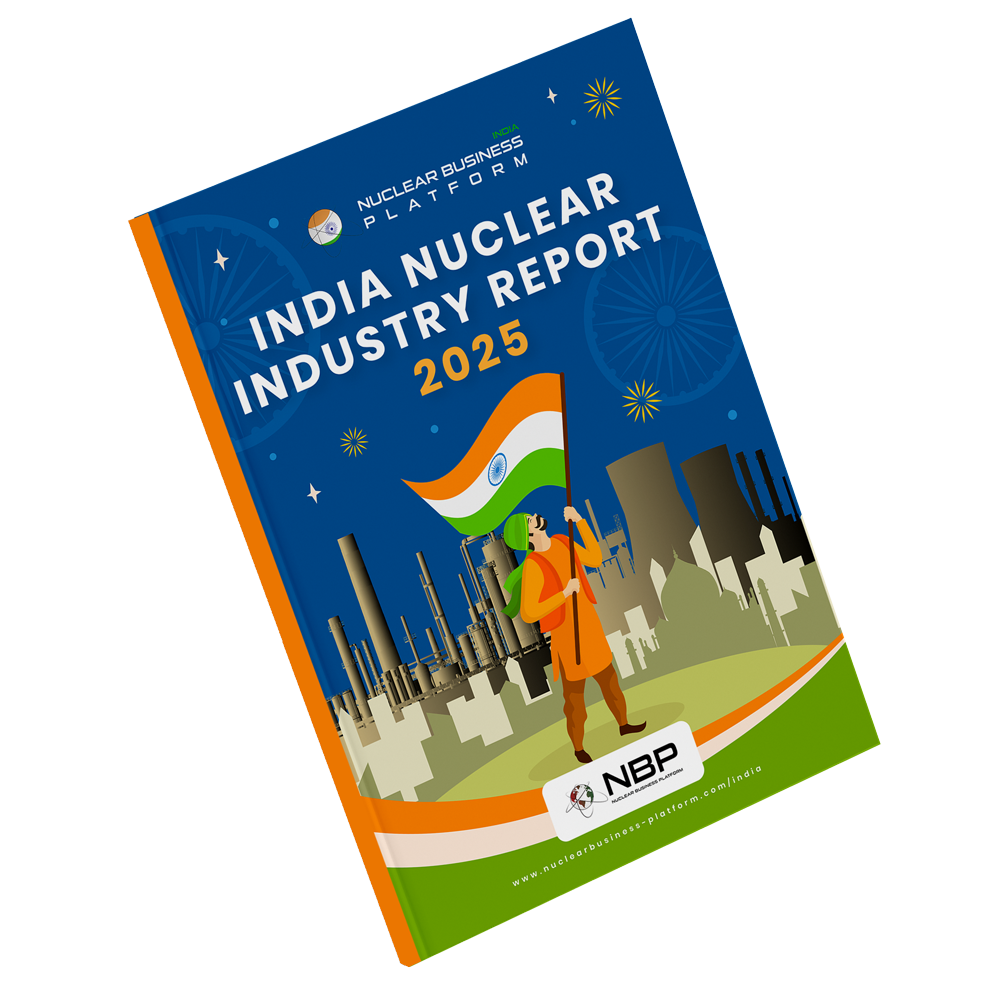Powering India’s Future: The Cybersecurity Battle Behind 100 GW of Nuclear Ambition
India’s nuclear power sector is undergoing a profound transformation, driven by the integration of digital technologies. Automation, remote monitoring, and real-time data analytics have enhanced operational efficiency and safety across nuclear power plants (NPPs), supporting ambitious goals like India’s target of 100 gigawatts of nuclear capacity by 2047. Yet, this shift has introduced a parallel challenge: cybersecurity vulnerabilities. As cyber threats grow in sophistication—capable of disrupting operations or even compromising national security—India must fortify its nuclear infrastructure to sustain this growth trajectory. The stakes were laid bar e in 2019 when the Kudankulam Nuclear Power Plant (KKNPP) faced a sophisticated attack linked to the North Korean Lazarus group, exposing gaps in administrative network security and delayed detection mechanisms. With the government now exploring private sector participation in nuclear-related activities, the need for a robust cybersecurity framework has never been more urgent. This article explores the challenges, regulatory landscape, and strategic roadmap to ensure India’s nuclear plants remain secure in the digital age.
The Regulatory Backbone: Policies and Frameworks in Place
India’s approach to nuclear cybersecurity is underpinned by a multi-layered regulatory framework. The Information Technology (IT) Act, 2000, amended in 2008, provides the legal foundation, penalizing offenses like unauthorized access, malware deployment, and data breaches with fines up to Rs. 1 crore and imprisonment. Section 66F, introduced in the amendment, defines cyberterrorism—crucial for nuclear facilities—and imposes life imprisonment for attacks threatening national sovereignty. However, enforcement remains challenging, particularly in attributing sophisticated attacks like the one at Kudankulam, where external researchers, not internal systems, first flagged the breach.
The National Cyber Security Policy (NCSP), 2013, builds on this foundation, offering a comprehensive strategy for critical infrastructure protection. It mandates Chief Information Security Officers (CISOs), adherence to international standards, and dedicated cybersecurity funding. Institutions like the Computer Emergency Response Team – India (CERT-In) and the National Critical Information Infrastructure Protection Centre (NCIIPC) drive implementation. CERT-In, under the Ministry of Electronics and Information Technology (MeitY), formalized rapid incident reporting within six hours and log retention for 180 days in 2022—post-Kudankulam—while NCIIPC ensures 24/7 oversight and compliance with standards like ISO 27001 and NIST. These mechanisms form a solid base, though incidents like Kudankulam highlight the need for stronger internal monitoring and transparency.
International Best Practices for India’s Nuclear Cybersecurity
As India strengthens its nuclear cybersecurity, global best practices offer a blueprint for progress. The International Atomic Energy Agency (IAEA) Nuclear Security Series provides comprehensive guidelines, emphasizing risk-based approaches, layered defences, and continuous monitoring. India could adopt the IAEA’s focus on integrating cybersecurity into the design phase of nuclear facilities, ensuring resilience from the ground up. The U.S. Nuclear Regulatory Commission (NRC) 10 CFR 73.54 rule mandates robust OT security, regular audits, and incident response plans—standards that could enhance India’s oversight of both state-run and private plants.
France, a leader in nuclear energy, employs a Defence-in-Depth (DiD) model, combining physical and digital safeguards with strict supply chain vetting. India could emulate this to address vulnerabilities exposed in past breaches, such as inadequate IT-OT segregation. Japan’s post-Fukushima cybersecurity reforms align with principles like Zero Trust Architecture (ZTA), emphasizing continuous verification and insider threat prevention—a model that could mitigate risks as private firms enter the sector. Collaborative frameworks, like the European Union Agency for Cybersecurity (ENISA), demonstrate the value of real-time threat intelligence sharing, which India could leverage through partnerships with global leaders. By aligning with these practices, India can elevate its nuclear cybersecurity to world-class levels.
The Private Sector Pivot: Opportunities and Risks
The Government of India’s exploration of private sector participation in nuclear-related activities promises innovation and investment, with India set to allow private players to design, build, and operate nuclear plants—a transformative shift from its state-dominated model. Legislative amendments under consideration, including changes to the Atomic Energy Act, 1962, the Civil Liability for Nuclear Damage Act, 2010, and the Electricity Act, 2003, aim to provide policy clarity and encourage investments, dismantling long-standing barriers to private entry. Corporate leaders such as Jindal Nuclear Power Private Ltd., Vedanta Group, Tata Power, and Reliance Industries have already made substantial initiatives, signaling robust industry interest. However, this pivot complicates the cybersecurity landscape significantly.
Unlike state-run facilities under the Department of Atomic Energy (DAE) and Nuclear Power Corporation of India Limited (NPCIL), which benefit from decades of centralized security protocols, private operators may lack uniform preparedness, risking inconsistencies across the sector. To mitigate this, the Atomic Energy Regulatory Board (AERB) must enforce standardized regulations, drawing from International Atomic Energy Agency (IAEA) and U.S. Nuclear Regulatory Commission (NRC) benchmarks, with mandatory audits by the Computer Emergency Response Team – India (CERT-In) and the National Critical Information Infrastructure Protection Centre (NCIIPC) to ensure resilience. The entry of diverse private players amplifies the need for such oversight, as varying operational cultures could introduce new vulnerabilities.
Supply chain security emerges as a pressing concern, particularly as private firms often rely on third-party vendors for critical components, a dependency likely to grow with their expanded role in plant design and operation. Blockchain-based tracking and sourcing from trusted vendors can safeguard against vulnerabilities, while integration into national threat-sharing networks, as mandated by NCIIPC, ensures rapid response to emerging threat. Insider threats, heightened by a broader and potentially less-vetted workforce under private operators demand stringent background checks and adoption of Zero Trust Architecture (ZTA). Additionally, private operators must develop Cyber Crisis Management Plans (CCMP), tailored to nuclear contexts, to bridge experience gaps with government protocols—a critical step as industry giants transition from preparatory initiatives to operational responsibilities.
Looking Ahead: A Roadmap for Resilience
India’s nuclear cybersecurity future hinges on innovation and adaptation. AI and Machine Learning can enable real-time threat detection and predictive analytics, flagging anomalies before exploitation. Quantum-resistant cryptography will protect sensitive data against emerging threats, while Digital Twins—virtual plant replicas—offer a safe space to test defenses. Workforce development, through advanced training and academic partnerships, will equip personnel for evolving challenges.
Regulatory frameworks must evolve, potentially mandating AI-driven tools and regular audits. Securing IT-OT convergence with unified platforms and a DiD approach will minimize risks. International collaboration—with the IAEA, U.S. Department of Energy, and ENISA—can provide critical intelligence and expertise, ensuring India stays ahead of threats.
Hence, India’s nuclear power plants are vital to its energy security and economic growth, making cybersecurity a non-negotiable priority. Past breaches like Kudankulam exposed weaknesses, but they also galvanized action. As private participation expands in nuclear-related activities, blending advanced technology, global best practices, and rigorous oversight will be key. This momentum will be further amplified by the upcoming India Nuclear Business Platform (INBP) 2025—a premier industry event that connects policymakers, global stakeholders, and business leaders. Engaging at INBP 2025 will provide companies with critical networking opportunities, investment insights, and strategic perspectives for navigating this high-stakes arena. For government, industry, and regulators, this is a business imperative with national stakes—securing India’s nuclear future demands nothing less than excellence.



